This Unrivalled Collection: The Hunterian's first catalogue
Introduction
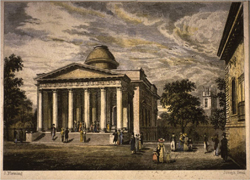 Hunterian Art Gallery
Hunterian Art Gallery
15 March – 11 August 2013
Admission £5 (£3 concession)
This exhibition celebrates 200 years since the publication of The Hunterian's first catalogue, the oldest museum guidebook in Scotland.
The Hunterian Museum opened in 1807, and the catalogue was published in 1813. Its author, Captain John Laskey, took the visitor through the museum room by room and case by case, carefully describing the items on display.
The book captures the spirit of the the Scottish Enlightenment, when Scotland's great thinkers sought to understand the natural world and the human mind. It reflects the knowledge of the world as understood at this time. Within a few years, scientists such as Charles Darwin radically changed our view of nature and humanity. 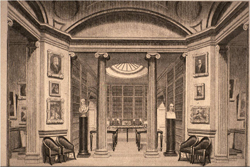
The exhibition conveys the atmosphere of Scotland’s oldest museum through objects, specimens and manuscripts. Many of the items have not been on display for over 150 years. Quotations from the original text allow visitors to compare the wisdom of the past with what we know today.
Enjoy our new programme of free talks!
Image 1: Coloured engraving of The Hunterian Museum in 1829, by J Fleming
Image 2: Interior of the original Hunterian Museum
Captain John Laskey
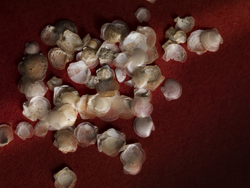 The author of The Hunterian's first catalogue was Captain John Laskey, a soldier, dealer and collector. He was from Devon, but served in a Militia regiment in Scotland.
The author of The Hunterian's first catalogue was Captain John Laskey, a soldier, dealer and collector. He was from Devon, but served in a Militia regiment in Scotland.
At the end of the 18th century it was popular for groups of like-minded individuals to meet informally in inns and coffee houses across London to share common interests and further their understanding of the world. Laskey was among them. He had wide interests in history and nature, with letters on various subjects published in the Gentlemans Magazine.
An enigmatic character, little is known about his personal life. He married Margaret Dickinson in 1795, daughter of a man who worked in the Armoury at the Tower of London, who helped Laskey to become well-connected among antiquarians and natural historians in the capital. He qualified as a solicitor and practiced in Exeter,later joining the 21st Kirkudbright and Wigtown Militia in 1804.
Laskey published papers on new species of molluscs, Napoleonic medals and the Elgin marbles.
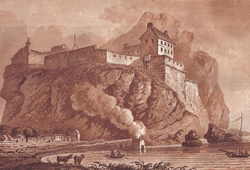 He wrote The Hunterian catalogue when he was transferred to Dumbarton Castle in 1811. As well as writing the catalogue, he also donated several items to The Hunterian including shells, rocks and minerals.
He wrote The Hunterian catalogue when he was transferred to Dumbarton Castle in 1811. As well as writing the catalogue, he also donated several items to The Hunterian including shells, rocks and minerals.
Image 1: Laskey's Scallop, a tiny species found in the Firth of Forth and described by Captain Laskey as a new species in 1811.
Image 2: Dumbarton Castle with lime kiln, John Stoddart, 1800
History of The Hunterian
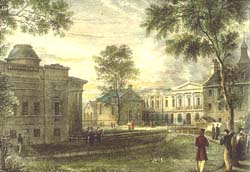 The Hunterian opened in Glasgow in 1807. It is one of the oldest museums in the world and the oldest in Scotland. The Museum was built following a bequest by the anatomist William Hunter to the University of Glasgow.
The Hunterian opened in Glasgow in 1807. It is one of the oldest museums in the world and the oldest in Scotland. The Museum was built following a bequest by the anatomist William Hunter to the University of Glasgow.
William Hunter (1718-1783) collected to advance knowledge in subjects of special interest to him. In other areas he engaged experts to help acquire specimens. As well as these very significant collections, his bequest included money for 'a dry well aired and Convenient House built on purpose for containing my said collection'.
The Museum's contents covered the fields of medicine, natural history, art and antiquities together with an extensive library. The Hunterian was also the first museum in Britain with a gallery for paintings.
When the University moved to its present site in 1870 the old buildings, including the Hunterian Museum, were sold and shortly afterwards demolished.
The Hunterian Museum today is situated within the University's main building, with The Hunterian Art Gallery across the road.
The Scottish Enlightenment
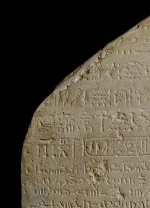 The Hunterian was built as an Enlightenment Museum, reflecting the spirit of a time when Scotland's great thinkers - philosophers, artists, writers, and scientists - sought to understand the natural world and the human mind.
The Hunterian was built as an Enlightenment Museum, reflecting the spirit of a time when Scotland's great thinkers - philosophers, artists, writers, and scientists - sought to understand the natural world and the human mind.
The catalogue provides a snapshot of human history and nature as understood by the Georgian Enlightenment. Within a few years, this perception changed radically. Understanding was altered by scientific revolutions such as the development of a deep-time chronology and Darwin's evolutionary theory.
The exhibition recreates the order and atmosphere of Scotland's oldest museum as recorded in one of the world's first museum catalogues. By comparing Laskey's careful notes with our modern knowledge, it is possible to see how much our understanding of the world has changed.
Image 1: Cast of the Rosetta stone, taken in 1803 shortly after the stone arrived in London. The cast was displayed at the opening of The Hunterian Museum.
New FREE 10 Minute Talk Programme
FREE lunchtime talks at 1pm every Wednesday from 22 May – 7 August 2013 in The Hunterian Art Gallery, 82 Hillhead Street, G12 8QQ. Attendance at the talks includes free entrance into the exhibition, normal price £5 per person.
Step back in time and see how the Hunterian Museum was in 1813. This series of short lunch time talks will provide fascinating insight into the exhibition which celebrates the 200th anniversary of The Hunterian’s first ever guide published by the mysterious Captain James Laskey (c.1760 - 1829) in 1813. Specially selected items from the original 18th century museum are on show.
Wednesday 22 May
Geoff Hancock: Who was Captain Laskey?
Wednesday 29 May
Dr Donal Bateson: Big Coins and Little Coins
Wednesday 5 June
Dr Stuart McDonald: The Mastodon Meat Eating Elephant.
Wednesday 12 June
Dr John Faithful: William Hunter and the Greatest Mineral Painting in the World
Wednesday 19 June
Prof David Gaimster: The Rosetta Stone, Breaking the Code
Wednesday 26 June
Dr Neil Clark: Bone Breccia, Whose bones were they?
Wednesday 3 July
Dr Stuart McDonald: Hunter and Blood Circulation
Wednesday 10 July
Peter Black: Portrait of Dr William Harvey (1578-1657)
Wednesday 17 July
Dr Sally-Anne Coupar: The world uncovered - William Hunter's "artificial curiosities"
Wednesday 24 July
Peter Black: Titian's portrait of Vesalius
Wednesday 31 July
Maggie Reilly: William Hunter's shells re-discovered
Wednesday 7 August
Geoff Hancock: Finding Captain Cook’s Missing Seashells.

